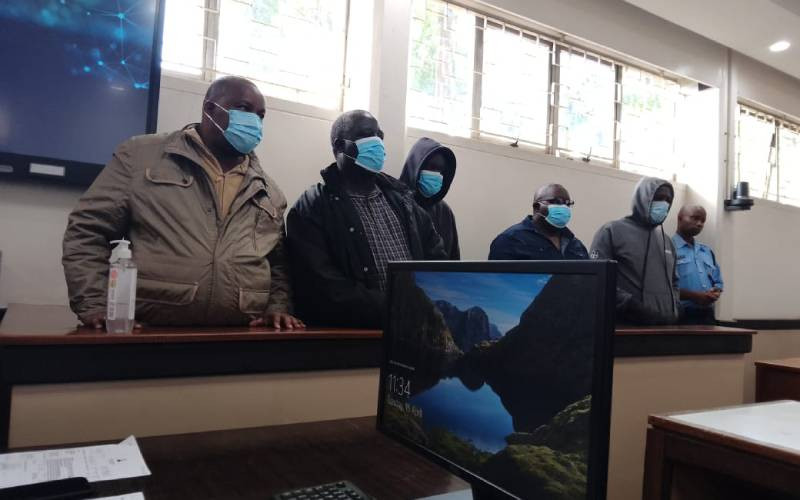Keep the fire burning. If ever there was a city that misunderstands and lives up to that Old Testament message, then it is Nairobi, whose nickname should change from the Green City in the Sun to the Fiery City in the Inferno because Nairobians always want to keep the fire burning.
Recently, there was a fire, nay, another fire, at Gikomba, and Kenya’s online pyrologists, fire ecologists and realtors concluded it was an act of arson instructed by someone with a burning desire to grab the land the market sits on. They might as well have been right!
Arson or not, fires in Gikomba and many other places in the city are never contained in time and in a safe and professional manner. Most, if not all of the time, they burn themselves out, destroy property and kill people.
Fire ecologists and health workers know that Nairobi records several fire incidents that are not reported because the victims are the marginalised urbanites who need empathy and sympathy, but not solutions. Last year, Kenya National Fire Brigade Association said in a day, between eight and 10 fire incidents are reported to the control room of the county’s fire service, which fails to contain them.
The city’s fire management capabilities have been under-par for decades. In Kenya’s modern history, the city’s fire and rescue services only worked in the aftermath of the 1998 attack at the US Embassy on Moi/Haile Selassie avenues.
But their equipment was worse for wear and their plight attracted the sympathy of fire fighters in some US cities, which then gifted them old equipment and trained them too because the city’s fire fighters were qualified by experience: They had worked for the then Nairobi City Council for long and were transferred to the fire brigade not only as a promotion, but because there was little to do there!
Some 20 or so years ago, Nairobi’s business-folk put their faith in private fire management firms, which came up to fill the void left by the city council’s fire brigade whose personnel were ill-trained and ill-equipped. These private firms had modified vans and which were as old as their founders — retired European soldiers and security officers who had made Kenya their retirement home and were just running kitchen table outfits for installing and inspecting fire alarms, fire extinguishers and smoke detectors. Anyway, in the land of the blind the one-eyed man is king. It was a typical case of getting a private solution for a public problem and this in essence left out the majority and the most vulnerable in both informal settlements and chaotic concrete jungles.
With devolution, things could have changed for the better, but they did not. In 2019, the city had only two operational fire stations — on Tom Mboya Street and in Industrial Area — which were built in 1907 and 1957.
In the same 2019, the county was constructing two fire stations, which it was not even funding, and money came from the World Bank, yet between 2013 and 2019, the administrations had collected Sh1.63 billion in fire inspection revenue.
Picking up the pieces
High revenues should translate to better equipment and services, but in March last year, the county government admitted it had only 52 fire engines and 120 trained fire fighters, out of which 24 were up for retirement in less than a year. After every fire incident in Nairobi, victims wail, pick up the pieces, inter their dead, and the whole city moves on without asking what should be done, or where the authorities, and the residents themselves went wrong.
Residents do not ask questions because they are corruptly implicit in this mess. Their level of fire safety awareness is almost nil because the inept fire service lacks capacity and wherewithal to conduct safety education. Nairobi is no longer a tinder box waiting to explode — it has been exploding because residents themselves are not concerned with staying safe while doing business in their pursuit of happiness. Residents and companies throw or keep all manner of combustible and inflammable items all over the place, buildings are constructed haphazardly, and illegally, on access routes and without adherence to fire safety standards.
Spaces between buildings — which are fire breakers, fire escape routes or access for fire fighters — have become shops and fire hydrants next to them are buried under brick and mortar because city officials are bribed to look the other way. Some hydrants are water-selling points or water supply to them have been rerouted through illegal connections plumbed in connivance with corrupt City Hall staff.
All these in a city whose fire brigade could not put out a fire in its own headquarters, City Hall, in 2004, even with the help of the armed forces, including GSU, regular police and the NYS. Fire fighters could not locate the hydrants to replenish the water bowsers and when they found them, they were dry, just like the ones around City Hall itself.
Last year the county shamelessly said it had a shortage of manpower and lacked proper enforcement of fire safety rules. To be fair, residents deserve better services, but can the moneyed among them stop enabling the sufferance of the most vulnerable through their corrupt deals that let them break safety rules?
Stay informed. Subscribe to our newsletter
-The writer is an editor with The Standard
 The Standard Group Plc is a
multi-media organization with investments in media platforms spanning newspaper
print operations, television, radio broadcasting, digital and online services. The
Standard Group is recognized as a leading multi-media house in Kenya with a key
influence in matters of national and international interest.
The Standard Group Plc is a
multi-media organization with investments in media platforms spanning newspaper
print operations, television, radio broadcasting, digital and online services. The
Standard Group is recognized as a leading multi-media house in Kenya with a key
influence in matters of national and international interest.
 The Standard Group Plc is a
multi-media organization with investments in media platforms spanning newspaper
print operations, television, radio broadcasting, digital and online services. The
Standard Group is recognized as a leading multi-media house in Kenya with a key
influence in matters of national and international interest.
The Standard Group Plc is a
multi-media organization with investments in media platforms spanning newspaper
print operations, television, radio broadcasting, digital and online services. The
Standard Group is recognized as a leading multi-media house in Kenya with a key
influence in matters of national and international interest.









